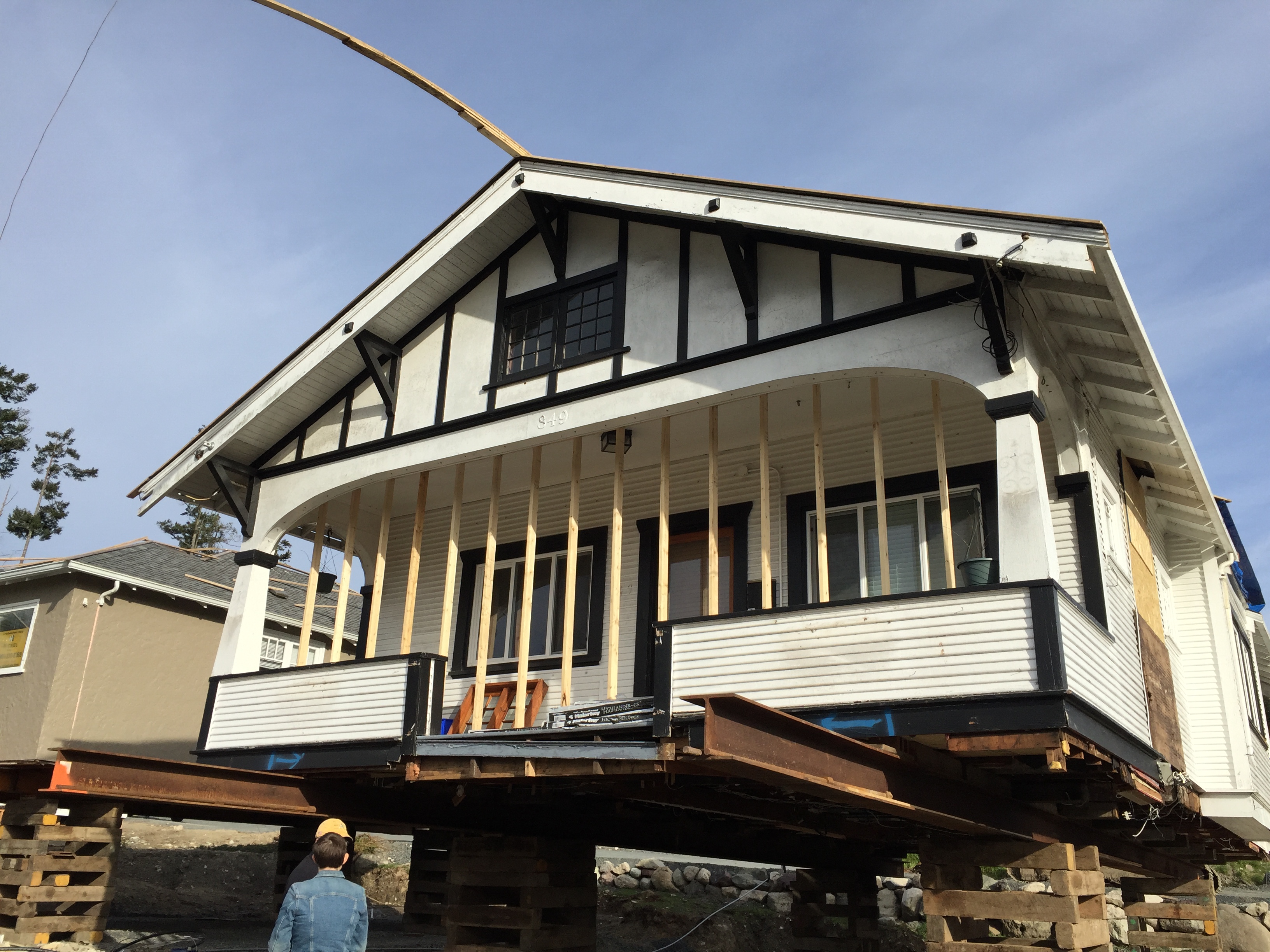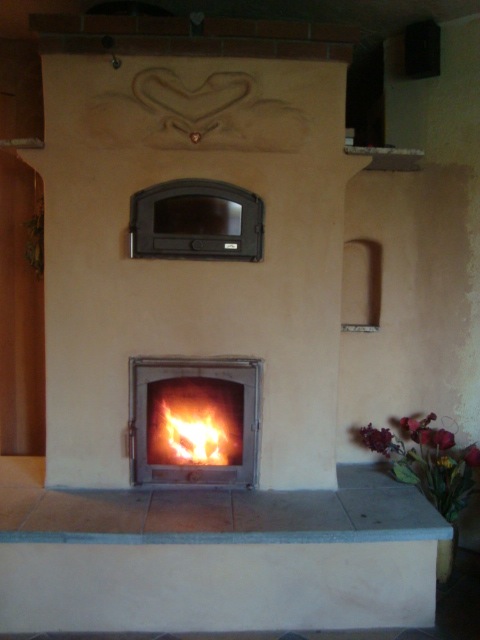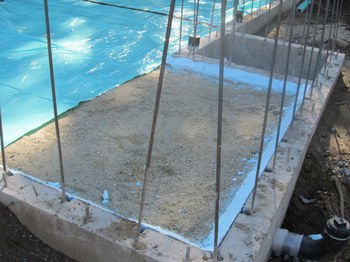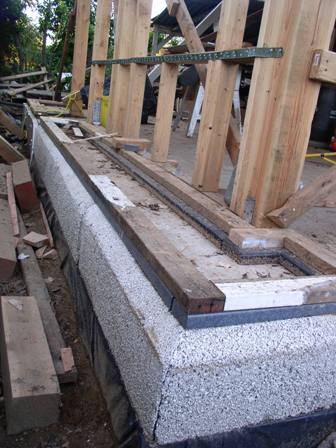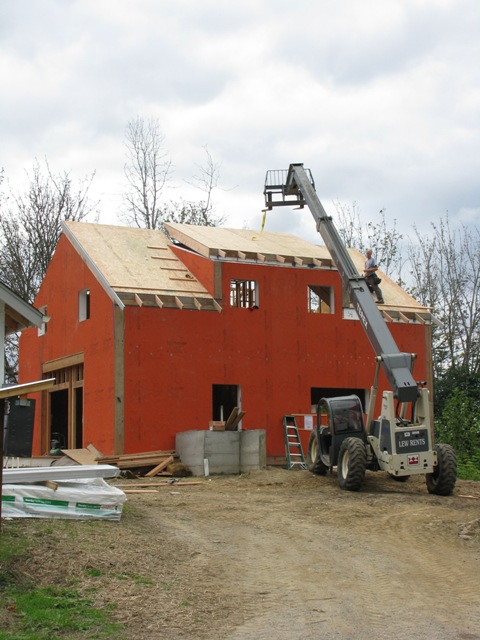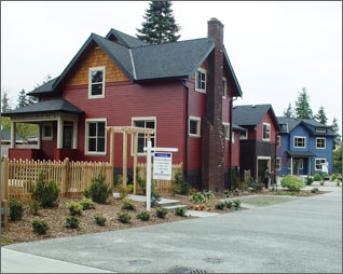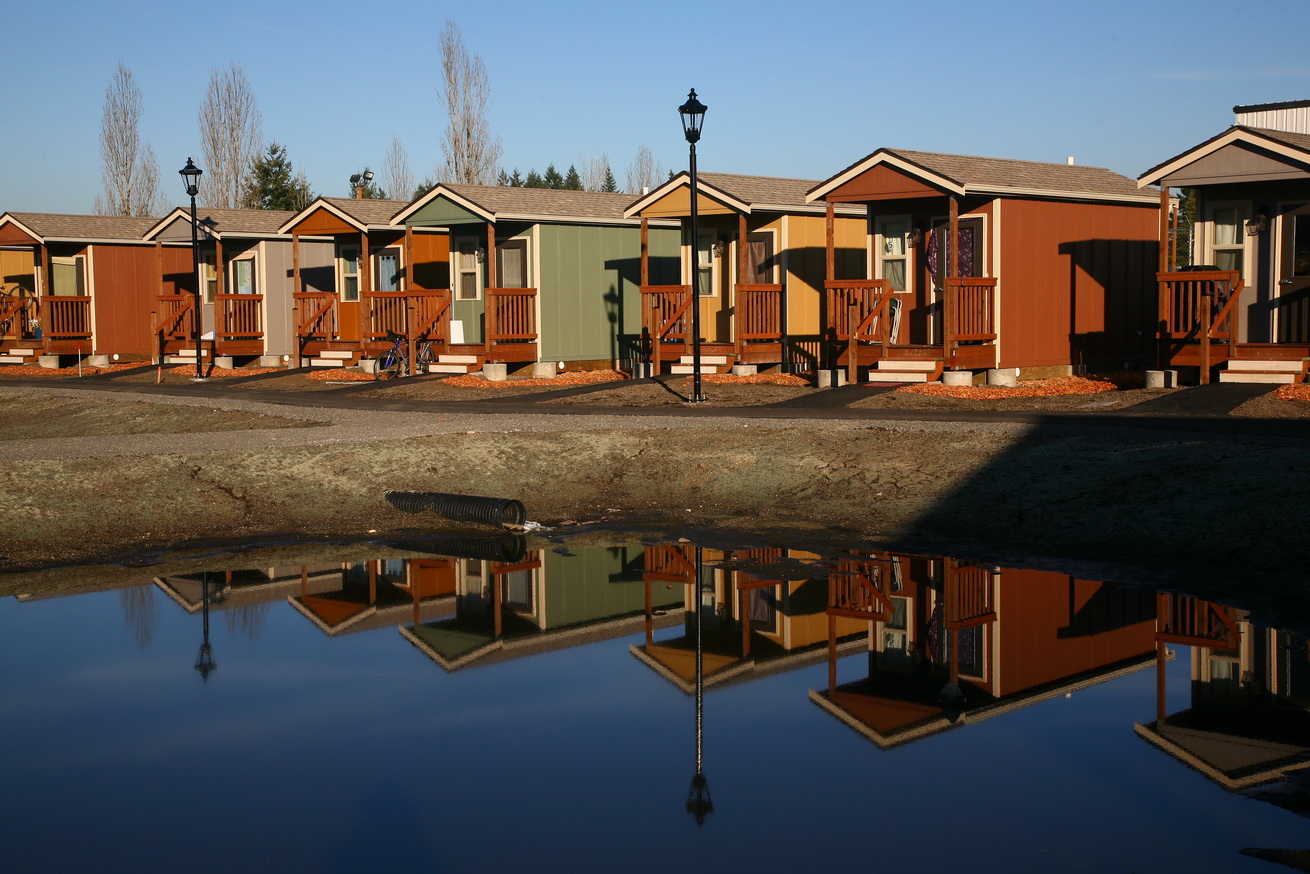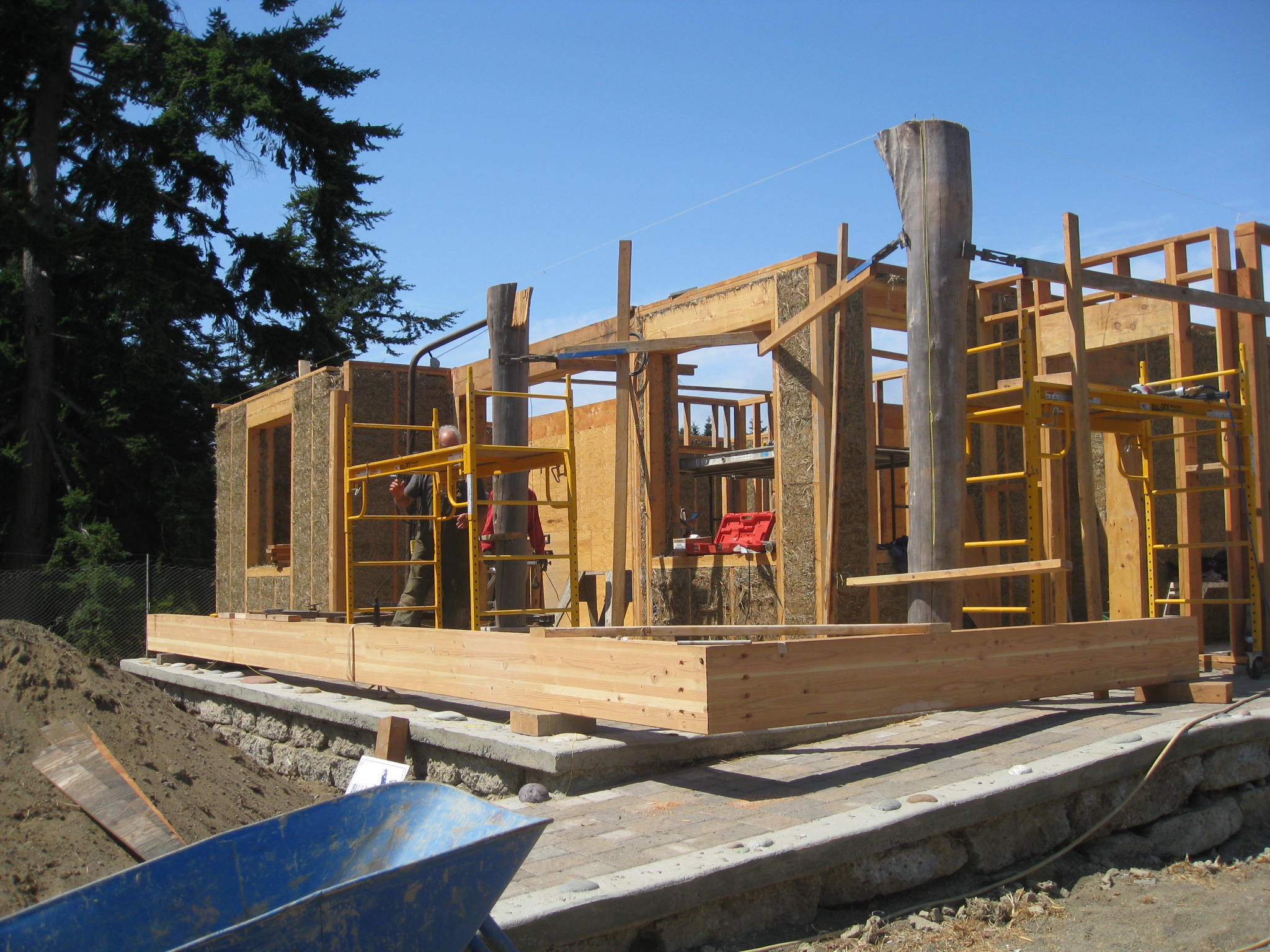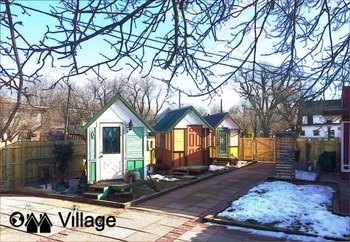San Juan Community Home Trust (Trust) recycled twelve homes with historic character for the second phase of the Sunrise permanently affordable housing development. The neighborhood features reclaimed homes from Victoria, Canada moved by barge and track vehicle to their current locations in Friday Harbor, Washington. Homes were inspected by engineers for integrity before transport and permitted as renovations to existing structures.
